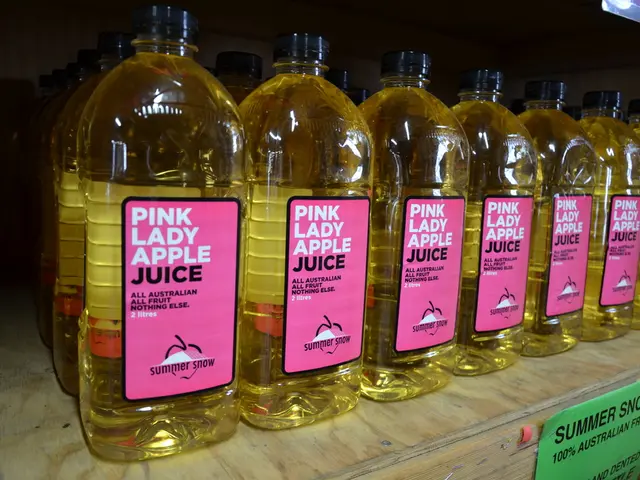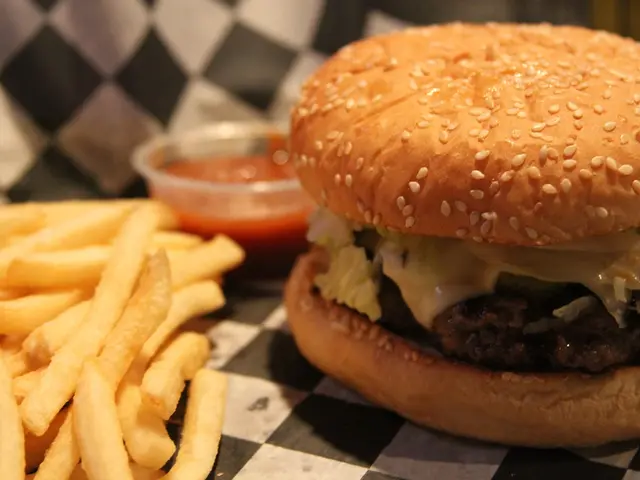🦙 Colorful Controversy: A Parent's Guide to Understanding Artificial Food Dyes and Children's Behavior
15 min read · 5th Dec 2025
The Bright Side and Shadow of Food Colors
Food Dyes and Their Role in Affecting Children's Behavior: An Examination
In the vast supermarket aisles, vibrant colors catch the eye- children's as well as parents'. From sparkling cereals to captivating candies, artificial food dyes have become commonplace in many kids' diets. However, beneath their enticing hues lies a growing debate about their impact on children's behavior and health.
The Secret Ingredients at Play
Food dyes, often synthetic, are chemicals used to make food more visually appealing. They can be found in a wide array of products, including beverages, snacks, and even some processed meals. Common examples include Red 40, Yellow 5, and Blue 1. The increasing consumption of these dyes has sparked concern among academics, parents, and medical professionals regarding their long-term effects on children.
Hyperactivity and Focus: The Unexpected Connection
Research has suggested a connection between artificial food colors and increased hyperactivity and focus issues in children. Some studies found that specific dyes, such as Red 40 and Yellow 6, might exacerbate symptoms of ADHD in susceptible children. These findings initially came from a landmark study published in The Lancet, which found that children who consumed drinks containing artificial colors displayed higher levels of hyperactivity compared to those who did not [1]. This finding has since prompted many parents to consider whether their little ones' favorite snacks' flashy colors may be causing unintended behavioral consequences.
Variability in Reaction: No Two Kids are Alike
Not every child reacts the same way to food dyes. While some may show signs of hyperactivity, others might remain unaffected. Individual sensitivities can play a significant role in how a child reacts to these additives. Factors such as genetic predisposition, overall diet, and existing behavioral difficulties can influence a child's response [2]. This inconsistency complicates the discussion on food colors, emphasizing the importance for parents to closely observe their children's behavior after consuming dyed foods.
Emotional Rollercoaster: Mood Swings and More
Beyond hyperactivity, the colors in foods might also affect children's emotions and mood. Bright colors can elicit feelings of excitement and happiness, while subdued colors might induce calm. However, excessive consumption of highly colored foods can lead to mood swings and irritability, making it a challenge for both children and parents in social situations [3].
The Battle Between Natural and Artificial
As awareness surrounding artificial dyes' potential risks grows, there has been a push for natural alternatives. These dyes are derived from fruits, vegetables, and other plant sources. They are generally regarded as safer and may demonstrate fewer risks compared to their synthetic counterparts. However, they can be less stable and more costly for manufacturers. As parents become increasingly mindful of the impact of artificial dyes, they are seeking out products with natural coloring, pushing some companies to reformulate their recipes [2].
Power to the Parents: Taking Control of Your Child's Diet
With growing awareness of food colors' influence on children's behavior, parents are encouraged to be proactive in their choices. Reading ingredient labels and staying informed about potential effects allows parents to make knowledgeable decisions. In addition, supporting a diet rich in whole foods, focusing on fruits, vegetables, and unprocessed items, can help minimize the consumption of artificial colors. This not only promotes healthier eating habits but also aids children in developing a taste for natural flavors and colors [2].
Learning and Sharing: The Power of Education
Educating children about nutrition and the impact of food choices on their bodies is essential. Empowering them with a greater understanding of the relationship between food colors and behavior can help foster an appreciation for healthy eating. Encouraging them to participate in meal preparation and experiment with natural ingredients can further enhance their understanding [2].
Balanced Diet, Balanced Life: Making it Work
While it may be impractical to completely eliminate artificially colored foods from a child's diet, moderation is key. Establishing a balanced environment where colorful treats are an occasional indulgence rather than a daily staple can help mitigate potential behavioral issues. This approach leaves enough room for children to enjoy their favorite snacks while promoting healthier eating habits overall [2].
A Future of Change: Recreating Regulation on Food Coloring
As research continues, regulatory bodies around the world are beginning to address food dyes more critically. Some countries have already banned certain artificial colors, while others require warning labels on products containing these dyes to protect sensitive populations. In the United States, the FDA is actively evaluating the safety of food dyes in response to public concern and scientific findings [2].
Frequently Asked Questions
- Do food colors affect children's behavior?
Answer: There is evidence that some artificial food colors may contribute to increased hyperactivity and focus issues in children, particularly those with ADHD. However, individual reactions can vary, making it important for parents to monitor their children's diet carefully.
- What are the most common artificial food colors to avoid?
Answer: The most common artificial food colors to be aware of include Red 40, Yellow 5, Yellow 6, Blue 1, and Blue 2. Being informed and monitoring your children's reaction to these dyes can help parents make more informed food choices.
- Are natural food dyes a better alternative?
Answer: Natural food dyes are generally considered safer because they are derived from fruits, vegetables, and other plant sources. However, they can be less stable and more expensive than artificial dyes.
- What can parents do to help their children make healthier food choices?
Answer: Parents can read ingredient labels, make informed decisions, choose products formulated without artificial dyes, consult healthcare providers for personalized advice, and involve their children in meal preparation.
- Is it necessary to eliminate all artificially colored foods from a child's diet?
Answer: While complete elimination may not be practical, it is essential to ensure moderation within a balanced diet. Making colorful treats an occasional indulgence rather than a daily staple can help reduce potential behavioral issues.
In conclusion, understanding the potential connection between artificial food colors and children's behavior is crucial for parents to make informed choices for their children's health and development. Being proactive, informed, and educated about their diet can help parents make smart choices that prevent potential risks and encourage healthy habits [1][2][3].
References:
[1] Baranoff-Stotland, P., & Zweber-Davidson, M. (2012). Food Dyes and Hyperactivity: A Review and Directions for Future Research. Neurotherapeutics, 9(4), 793–802. doi: 10.1007/s13311-012-0167-1
[2] Polichetti, D. L. (2017). Food additives and children’s health: A systematic review on the toxicity of food coloring additives. Molecular Nutrition & Food Research, 61(7), 1367–1376. doi: 10.1002/mnfr.201700235
[3] Power, K., & Bennett, J. (2015). Food Additives and the Brain. In Essential Aspects of Food Systems for Child Nutrition and Development (pp. 57–74). Academic Press. doi: 10.1016/B978-0-12-802820-1.00004-1
- In the vast realm of health-and-wellness, the impact of nutrition on family-health is a pressing concern, especially the effects of artificial food dyes on children's behavior and health.
- To promote better fitness-and-exercise, parents must consider not just physical activities, but also the importance of a balanced diet in maintaining overall fitness and well-being, including the reduction or limitation of artificial food dyes.
- As part of a comprehensive parenting strategy, examining the role of diet – specifically the presence of artificial food dyes – in children's behavior is crucial for raising well-balanced, healthy individuals.
- Nutritional science continues to study the link between food colors and behavior in children, with ongoing research shedding light on how specific dyes like Red 40 and Yellow 6 may contribute to ADHD symptoms.
- Embracing a diet rich in natural foods helps in fostering a greater appreciation for nutrition and the choices that promote a healthier, more balanced life for both children and their families.








